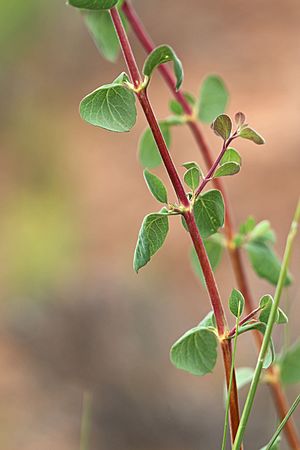Desert snowberry facts for kids
Quick facts for kids Desert snowberry |
|
|---|---|
 |
|
| Scientific classification | |
| Genus: |
Symphoricarpos
|
| Species: |
longiflorus
|
Symphoricarpos longiflorus is a cool plant often called desert snowberry or fragrant snowberry. It belongs to the honeysuckle family, just like the sweet-smelling honeysuckles you might know! This plant was first described by a scientist named Asa Gray in 1873. You can find it growing naturally in the western parts of the United States, from places like the Great Basin all the way to western Texas. It also grows in northwestern Mexico.
Contents
Where Does the Desert Snowberry Live?
The desert snowberry is quite tough! It loves to grow in rocky desert areas. You can also find it in places with sagebrush, chaparral, or in different kinds of forests and woodlands. This plant is most often found in dry places.
What Does the Desert Snowberry Look Like?
The desert snowberry is a type of shrub. It grows upright and can spread out, with many stiff branches. It can reach about a meter (or 40 inches) tall. The plant can be smooth or a little bit hairy. Sometimes, its branches have tiny spines.
Branches and Leaves
The bark on its branches is usually reddish when young. As the plant gets older, the bark turns white and can look like it's shredding. Its leaves are thick and often feel fuzzy. They can be green or have a blue tint. The leaves are usually shaped like a spear and are quite small, often less than 2 centimeters (0.8 inches) long.
Flowers and Fruit
One of the best things about this plant is its fragrant flowers! They can grow alone or in pairs where the leaves meet the stem. Sometimes, they grow in a small cluster called a raceme. Each flower has a long, thin tube, which can be up to 1.5 centimeters (0.6 inches) long. The end of the flower opens up with five pointed parts.
The flower's tube can be bright pink, pale pink, or even cream-colored. The open part of the flower might be a lighter shade. After the flowers bloom, the plant produces a dry fruit. This fruit is called a drupe and is less than a centimeter wide. Inside each fruit, you will find two seeds.

